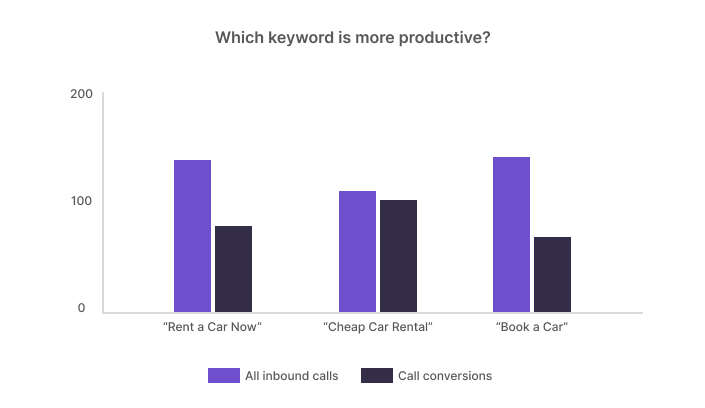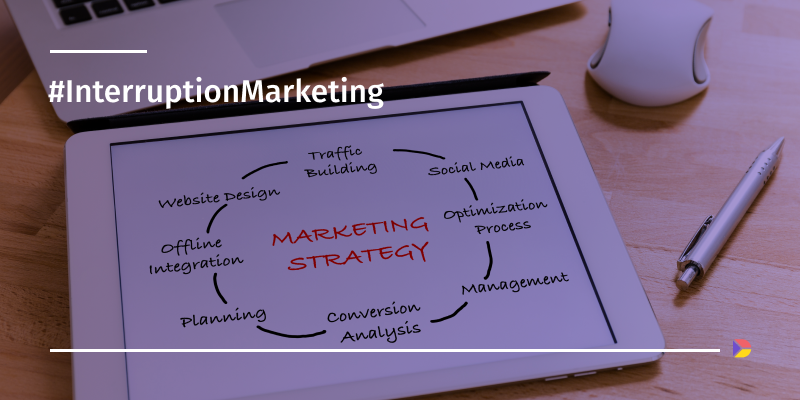Ready to improve your marketing ROI?
Fast registration. User-friendly interface. Robust integrations.
Closed-loop attribution connects the marketing and sales teams' efforts to assure high conversion rates and cost savings.
In the previous article, we touched upon the important tendency of connecting marketing and sales data for high conversion rates. If a company does not care about close cooperation between marketing and sales departments, it risks losing budgets and efforts.
The marketing department examines the target audience to create several customer profiles. Then, keeping that data in mind, they create advertising campaigns to make people aware of their product or service. If the campaign is catchy and the targeting works well, people will contact a business via contact forms, CTA buttons, and other means. Those connected with a business are immediately called leads and transferred to the sales department. That is the point where the competence of marketers presumably ends.
Sales departments are responsible for taking the leads and converting them into clients with the help of phone consultations, email newsletters, special offers and bonuses, etc. Everyone appears to be busy, yet the results may be disappointing. When it becomes clear that the company is not converting leads and that the ROI is too high, the marketing department blames sales for not doing enough with the leads, while sales claims that the leads are of poor quality.
The cause of the problem is a lack of data sharing between departments. Because not every lead is ready to convert, sales representatives sometimes waste their time and effort. By sharing information, closed-loop attribution allows everyone to benefit.
For example, marketers see that people react to the keywords “Rent a car Now”, and send those leads to sales. However, the target audience that comes from a “Cheap Car Rental” banner converts better. Therefore, it is better for the sales agents to concentrate on that segment of the audience.

What Exactly is Closed-Loop Attribution?
The world of marketing is rapidly evolving, bringing new terms and concepts to the experts’ attention. In one of our blog posts, we discussed the most common attribution types in marketing, which are relevant for practically any type of advertising campaign. They involve the process of finding out what moment has become a decisive factor in the process of purchasing a product or service from your firm.
However, when dealing with call tracking, the attribution models may vary. In this case, marketers analyze whether leads come directly from ads or after spending some time on the site browsing its pages. Further optimization occurs as a result of the obtained insights.
Now let’s take a closer look at closed-loop attribution. To some extent, it involves both of the above-mentioned models. Closed-loop measurement enables the analysis of data from all phases of the customer journey, linking each touchpoint to matching business outcomes. Therefore, it is the process of correlating the efforts of the marketing department with the results of the sales department. Closed-loop attribution helps businesses answer the following questions:
- Which keywords attract more leads?
- What leads are more likely to convert?
- What is a preferable communication method with the leads?
- Which traffic source is worth investing in?
With answers to those questions, businesses will get a clear view of ROI and proper campaign optimization.
How Does Closed-Loop Attribution Work?
Closed-loop attribution tracks a customer's journey from initial engagement to final conversion in a completed system. It is a method of tracking a consumer from the moment they click a banner, through the communication process, and progressively moving them down the marketing funnel. If you employ a call tracking solution or any other tracking software, closed-loop attribution connects its data with customer relationship management (CRM) systems.
The process begins with the identification of a customer's initial touchpoint, such as a website visit or email opening. Next, the customer's interactions with subsequent touchpoints, such as a follow-up email or ad campaign, are tracked and analyzed. This information is then fed into the company's CRM system, where it is integrated with customer data to inform future marketing initiatives.
By using a closed-loop attribution model, companies can gain a more accurate understanding of which marketing campaigns are driving conversions and adjust their strategies accordingly. This helps them optimize their marketing spend and increase ROI.

How to Implement Closed-Loop Attribution in Business?
Closed-loop attribution helps firms determine which campaigns, channels, and techniques are delivering the most revenue and modify their strategy accordingly by analyzing data from numerous touchpoints throughout the customer experience.
Here are the steps to implementing closed-loop attribution in business:
- Define your goals: Start by identifying the key actions that your customers take on your website or app that eventually lead to a sale. Examples include form submissions, product purchases, or subscriptions. Those will be the goals you wish to achieve.
- Set up tracking: Implement tracking pixels, event tracking, and other marketing analytics tools to capture user behavior across your marketing channels and website. Pay-per-call campaigns work best for businesses that involve phone consultations.
- Implement a CRM system: The analytical data from your tracking tool should be easily accessible for any team member. The best way to do that is to integrate it with a customer relationship management platform. Make sure you study the functionality of the CRM carefully so as not to make the learning curve too steep for the employees.
- Examine the insights: Learn how your customers interact with your website and landing pages by using various marketing attribution models. Determine which traffic sources, advertising campaigns, and approaches are generating the highest quality leads and money.
- Customize your marketing strategy: Most call tracking solutions allow for immediate campaign optimization. Adjust your ads, terms, keywords, messaging, and offers to focus on the tactics that drive the most revenue. Spend less while gaining more quality leads.
- Continuously monitor and adjust: Closed-loop attribution is an ongoing process. Continuously track your marketing performance, analyze the data, and optimize your marketing strategy accordingly.
Conclusion
Implementing closed-loop attribution brings valuable insights for any business. It can optimize marketing efforts, increase ROI, and drive sales growth. With the right tools and strategies in place, closed-loop measurements will allow businesses to achieve performance goals quickly and with little investment.
If you are looking for a powerful call tracking tool with transparent analytics regarding your marketing campaigns, do not hesitate to contact our team. Our technical staff will be pleased to demonstrate our solution and clear up any hesitations.
Ready to improve your marketing ROI?
Fast registration. User-friendly interface. Robust integrations.




